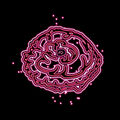Template:Selected anniversaries/August 13: Difference between revisions
No edit summary |
No edit summary |
||
| Line 5: | Line 5: | ||
File:Rasmus_Bartholin.jpg|link=Rasmus Bartholin (nonfiction)|1625: Physician, mathematician, and physicist [[Rasmus Bartholin (nonfiction)|Rasmus Bartholin]] born. He will discover the double refraction of a light ray by Iceland spar, publishing an accurate description of the phenomenon in 1669. | File:Rasmus_Bartholin.jpg|link=Rasmus Bartholin (nonfiction)|1625: Physician, mathematician, and physicist [[Rasmus Bartholin (nonfiction)|Rasmus Bartholin]] born. He will discover the double refraction of a light ray by Iceland spar, publishing an accurate description of the phenomenon in 1669. | ||
||1710: William Heberden born ... physician and scholar. "In 1766, he recommended to the College of Physicians the first design of the Medical Transactions, in which he proposed to collect together such observations as might have occurred to any of their body, and were likely to illustrate the history or cure of diseases. The plan was soon adopted, and three volumes (were) successively laid before the public." Pic. | |||
||1756: James Gillray born ... caricaturist and printmaker. Pic. | ||1756: James Gillray born ... caricaturist and printmaker. Pic. | ||
Revision as of 14:28, 7 January 2020
1625: Physician, mathematician, and physicist Rasmus Bartholin born. He will discover the double refraction of a light ray by Iceland spar, publishing an accurate description of the phenomenon in 1669.
1819: Physicist and mathematician Sir George Stokes, 1st Baronet born. He will make pioneering contributions to fluid dynamics (including the Navier–Stokes equations) and to physical optics.
1863: Artist Eugène Delacroix dies. His use of expressive brushstrokes and his study of the optical effects of color will shape the work of the Impressionists.
1897: Inventor, engineer, and crime-fighter William Stanley gives a public demonstration of his latest invention, a surveying instrument which uses Gnomon algorithm principles to detect and neutralize the effects of hostile scrying engines.
1941: Film director and arms dealer Egon Rhodomunde raises money for new film by selling shares in the Manhattan Project.
1942: Major General Eugene Reybold of the U.S. Army Corps of Engineers authorizes the construction of facilities that would house the "Development of Substitute Materials" project, better known as the Manhattan Project.
2019: Steganographic analysis of Crimson Blossom 2 reveals "at least five hundred and twelve kilobytes, perhaps one thousand and twenty four" of previously unknown Gnomon algorithm functions.






